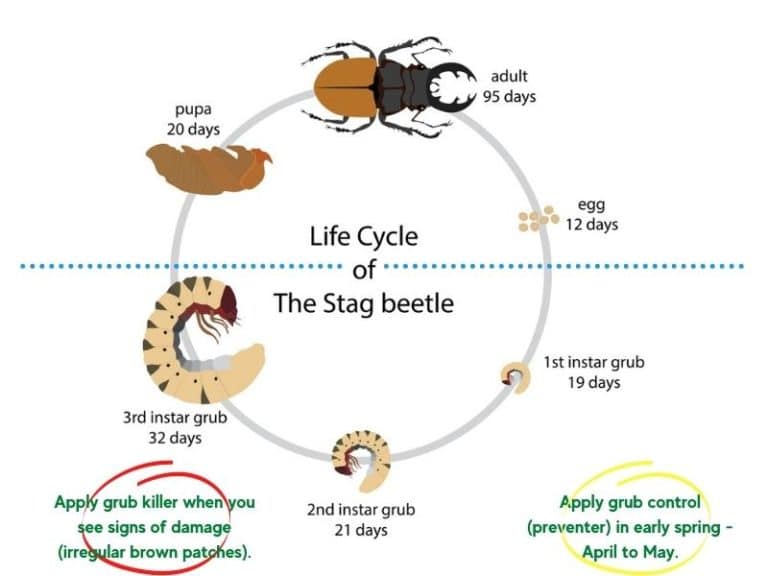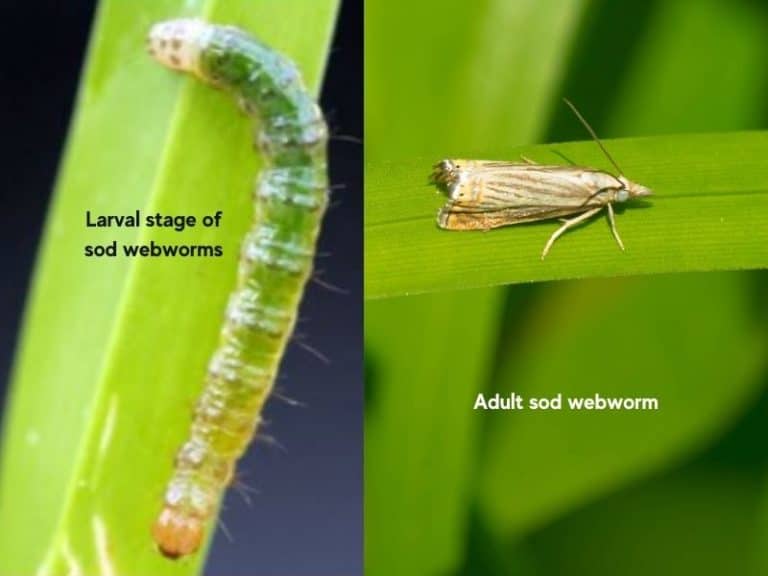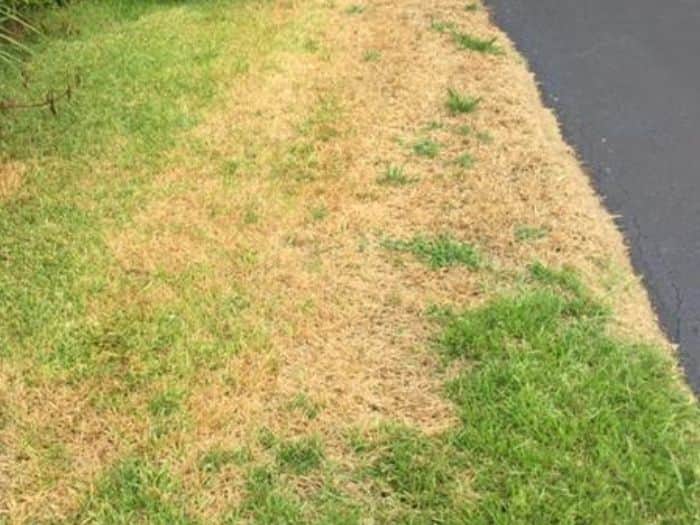Why is Sevin Prohibited on Lawns? 3 Safe Alternatives to Use
Sevin contains an active ingredient called carbaryl used for insect control in gardens but rarely on lawns. Carbaryl contains toxic chemicals that can cause damage to turfgrass on your property.
Sevin Ready to Spray is prohibited for use on lawns because it contains Carbaryl, a toxic chemical that can injure turfgrass and pose the risk of poisoning to humans and pets. An safe alternative that can be applied on lawns is Sevin Insecticide Granules.
Since children and pets love to play outside, especially on the lawn, it’s important to keep your lawn clean and safe for them. Sevin can irritate when it comes into contact with the skin and eyes. Seek immediate medical attention if you experience sneezing, eye irritation, and diarrhea due to Sevin exposure.
Why is Sevin prohibited on lawns?
If a person swallows or inhales Sevin, they’re at risk of nerve reactions, which is why it is prohibited on lawns. Sevin also damages turfgrass and other plants such as buttercup, English daisy, clover, and wild violets.
Depending on the conditions, Sevin insecticide can stay on your lawn for 4 to 72 days. The poisoning from the Cabaryl can cause seizures to humans when used on lawns.
When Sevin is sprayed on these plants and turfgrass, it causes damages such as wilting and leaf patches, and the lawn might also become bare. If you must use Sevin, it has granules which can be a plausible alternative.
Lawns are crucial for the curb appeal they give to your compound. However, they are insects’ favorite places to live – among the grass, plants, and soil. Therefore, you should control insects on your lawn using safer insecticides and pesticides.
Sevin is one of the most effective insect and pest control chemicals. However, it poses serious health risks to humans and animals which is why its use is prohibited in lawns.
3 Best Sevin alternatives for lawn
There are various environmentally friendly pesticides to use on lawns other than Sevin. These do not stay for extended periods on the property and are easily washed away by rain or wind.
Always check with your area’s weather forecasting to ensure you apply insecticides and pesticides on your lawn one or two days before it rains. That allows the insecticidal soaps, neem oil, and companion planting the time to work effectively on your lawn before it is washed away.
1. Insecticidal soaps
Insecticidal soap costs about $16.99 and effectively eliminates harmful insects such as spider mites, and aphids that live under turfgrass. It’s friendly to the environment when carefully prepared and formulated.
The best insecticidal soap formula should not leave soap scum on the grass. If that happens, it means the soap is not formulated correctly and can make your lawn unsightly.
Fatty acid is the active ingredient in insecticidal soaps. Pests such as aphids and mites have a soft outer body layer. When fatty acid in soaps penetrates inside them, it causes dehydration to the insects, and they die.
Insecticidal soap is effective only when pests and insects get into contact with it. Otherwise, it will not work if the spray dries out. To be effective, you should apply it on your lawn every day until the pest is under control. Besides, insecticidal soap has no residue effect on the ground.
How to apply insecticidal soap
- Spray the soap solution on an infested lawn early in the morning and late evening to avoid soap scum forming on the turfgrass. Do not apply when the sun is directly on the foliage as it will cause scorching on the grass.
- Apply it when the grass is already watered. Dry leaves are prone to damage.
- To know the correct solution at home, apply the solution to a small section of your lawn. Observe the changes on leaves; if the leaves show no spotting and discoloration, that’s the correct amount.
- Spray your lawn when the weather is calm; windy weather may cause spray drift.
2. Neem oil
Neem oil is a pesticide found in neem tree seeds. For many years, the oil has been used as pest control and insect repellent. Neem oil is easily recognized by its yellow color and bitter taste.
Unlike Sevin, neem oil is not prohibited for use on lawns. It has a positive effect on lawns because it does not affect lawn plants and grasses.
The active ingredient in neem oil is azadirachtin, the most active compound responsible for pest control in neem oil.
Neem oil is formulated into dust, granules, and liquid powders. Follow the instructions on the container before applying. Neem oil is a crucial pesticide that interferes with insects’ reproductive systems and reduces their multiplication on your lawn.
How to apply neem oil on lawns
- Use a lawn sprayer to mix neem oil with an ounce of water. Shake it well until it’s evenly dissolved. This way, the solution will work equally throughout the grass.
- Start from one corner of the lawn as you spray the grass. Let the solution sink in and observe the changes in the area. When insects move away from it, that’s the proper solution. Go ahead and spray your lawn.
- Do not repeat one area twice as it may dampen turfgrass and cause other problems.
- Spray your lawn twice a week to control insects that penetrate the soil and destroy the remaining fungi.
3. Companion Planting
Companion planting is an old pest control tactic. It involves planting two or more plants close to each other on your lawn to attract predators of common pests or repel pests. It is far much safer to use companion planting than it is to use the Sevin pesticide.
The companion plants will not affect turfgrass. Instead, they will help control pests in your lawn. Finding the best companion plant can be difficult especially if you want to maintain a clean lawn, but some plant companions are already known and presumed compatible.
For example, strategically planting coriander, chives and nasturtium will attract insects, and then the insects will feed on the pests such as aphids and caterpillars or sod webworms on your lawn. Note that some insects can benefit your lawn, and using Sevin can kill all of them.
How to use companion planting
- Ensure you know the type of pests on your lawn so you can choose the correct companion plants for the lawn. For example, I recommend roses and garlic or radishes and seedlings.
- Plant the companion plants on a level area. Low-level regions retain moisture best in plants and promote healthy germination.
- ● Ensure adequate sun around the plants and your lawn, encouraging the pests to come out of the grass.
How long does Sevin last on the lawn?
Sevin can last up to 3 months on the lawn. It is also difficult to wash away even by rainfall, especially when sprayed in dry weather within 24 hours.
It’s effective when the insects crawl or fly to get in contact with the Cabaryl on the treated area or plant. Therefore it is advisable to spray Sevin on soil, plants, and trees.
However, if you need a clean and healthy lawn, Sevin insecticide is not a good idea. Instead, use companion planting, neem oil, or insecticidal soaps, which are not prohibited on lawns.


![How Do You Get Rid of Ants in Grass [Fixes that Work]](https://lawnmodel.com/wp-content/uploads/2020/10/How-to-get-rid-of-ants-in-grass-768x512.jpg)


